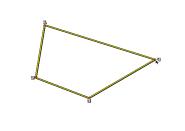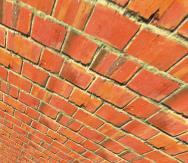Quick links to procedures on this page:
You can apply a transformed sample by filling, instead of using a brush. Filling allows you to cover a large area evenly, without much effort. Filling is supported only when you use perspective or bilinear sampling, with or without tiling.
To apply a transformed sample as a fill, you need to set both sample source and destination reference points, as you would when applying a sample with a brush. For information, see Applying transformations when sampling.
If you want to save the sample source reference area as a pattern for future use, you can capture the pattern. For more information, see Creating and editing patterns.
|
3
|
Choose Window  Brush Control Panels Brush Control Panels  Cloning. Cloning. |
|
4
|
In the Cloning panel, enable the Clone Color check box. |
|
5
|
Hold down Option (Mac OS) or Alt (Windows), and click to set the four sample source reference points. |
|
6
|
Hold down Option + Shift (Mac OS) or Alt + Shift (Windows), and click to set the four destination reference points. |
|
7
|
Click the Paint Bucket tool  from the toolbox. from the toolbox. |
|
8
|
Choose Source Image from the Fill list box on the property bar. |

The destination points determine where the transformation occurs.

By using transformed clone information, the brick pattern becomes a steep wall.
Copyright 2013 Corel Corporation. All rights reserved.